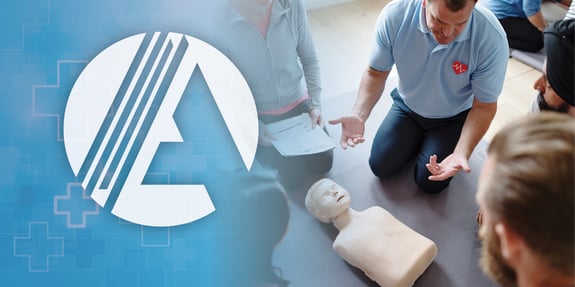The best patient outcomes occur when clinical staff are well-prepared for any situation. QUAD A requires all operating room and Post Anesthesia Care Unit (PACU) team members, including physicians/surgeons and physician assistants, to be minimally certified in Basic Life Support (BLS) and at least one team member to have Advanced Cardiac Life Support (ACLS) certification, preferably the surgeon or anesthesia provider. Pediatric Advanced Life Support (PALS) certification would be required if the facility treats pediatric patients. Most ACLS training providers require BLS as a pre-requisite. Because ACLS is a higher level of training, evidence of ACLS certification alone is sufficient.
The American Heart Association (AHA) and Red Cross are the most well-known providers of ACLS certification and BLS for Healthcare Providers; however, other organizations offer these certifications. The certification instruction should include online and hands-on instruction to adequately prepare for a patient emergency.
All clinical staff must be knowledgeable about treating cardiopulmonary and anaphylactic emergencies. The ACLS algorithms provide protocols and guidelines for the treatment of cardiopulmonary emergencies. They base their guidance on the latest scientific evidence and recommendations from the American Heart Association (AHA).
The best way to ensure staff are aware of their role in an emergency is to conduct Code Blue drills. These drills will reinforce staff knowledge, heighten awareness, and familiarize them with the location of emergency supplies. Facility policies and procedures outlining the management of emergencies should be in place. Individual personnel files must include documentation of certification and training, including the personnel files of contracted clinical staff working in the facility.
Regular checks of the emergency cart are another essential element of emergency preparedness. The emergency cart items should be adequately stocked, in good working order, and readily available with no expired supplies or medications. Performing emergency cart checks at least weekly can minimize the chance of not having a required item. Click here for guidance on the quantity of each medication required to be on hand. QUAD A standards outline required emergency cart medications; however, some states require a more extensive list. All facilities need to remember to check their state requirements.
The facility should establish a frequency for checking that the defibrillator is in good working order. Check the defibrillator while plugged into a power source and while operating on battery power. An additional check of the defibrillator should be performed annually by a biomedical technician.
QUAD A emphasizes patient safety, and patients count on clinicians to handle emergencies effectively and efficiently. We thank all our facilities for their commitment to patient safety and quality care.
Since 1980, QUAD A (a non-profit, physician-founded and led global accreditation organization) has worked with thousands of healthcare facilities to standardize and improve the quality of healthcare they provide – believing that patient safety should always come first.


